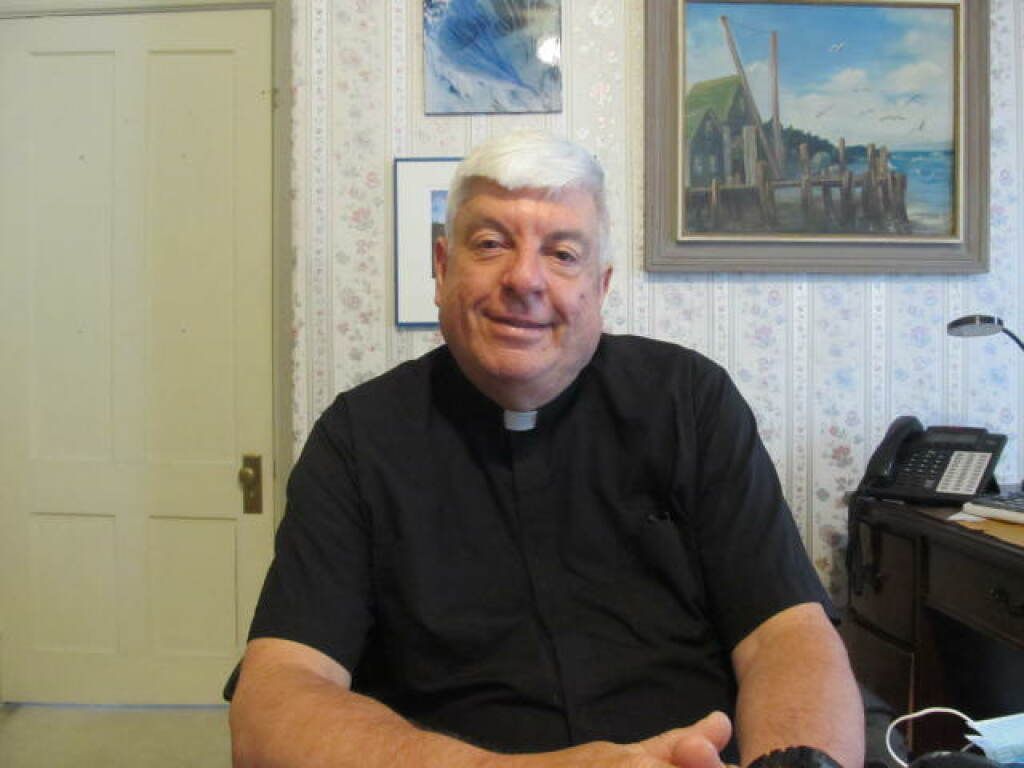 Love’s DNA
Love’s DNA
A well-known sculptor had a burning ambition to create the greatest statue of Jesus Christ ever made. He began in his Oceanside studio by shaping a clay model of a triumphant, regal figure. The head was thrown back and the arms were upraised in a gesture of great majesty. It was his conception of how Christ would look: strong and dominant. “This will be my masterpiece,” he said, on the day the clay model was completed.
During the night, however, a heavy fog rolled into the area and sea spray seeped through a partially opened window. The moisture affected the shape of the clay so that when the artist returned to the studio in the morning, he was shocked at what he found.
Droplets of moisture had formed on the model creating an illusion of bleeding. The head had drooped. The facial expression had been transformed from one of severity to one of compassion. And the arms had dropped into a posture of welcome. It had become a wounded Christ-figure.
The artist stared at the figure, agonizing over the time wasted and the need to begin all over again. Then, inspiration came over him to change his mood. He began to see that this image of Christ was, by far, the truer one. So he carved these words into the base of the newly shaped figure: Come Unto Me.
Now, in today’s gospel reading we have the story of the Transfiguration. It’s difficult to describe, and I’m sure Matthew would agree that words fall short when trying to describe what happened. It says simply, “he was transfigured before them; his face shone like the sun and his clothes became white as light.”
What Peter, James and John are getting here is a glimpse of the divine Jesus, the Son of God. Peter’s reaction gives an indication of how awe-struck the apostles are. Jesus is glowing, and two figures who had been dead for hundreds of years are chatting with him…and what does Peter say? Let me set up some tents for the three of you… But then, the experience becomes even more other-worldly with the voice of God proclaiming, “This is my beloved Son, with whom I am well pleased; listen to him.”
Well, as I said, the basic idea is that the three apostles are getting a glimpse of the divine Jesus—kind of like the original, powerful, perfect statue the sculptor intended—a triumphant, regal figure.
But we know what will happen next as the gospel story progresses: crucifixion will take place and the body of Jesus will be transformed—but this time, transformed downward into the pathetic, bleeding, drooping and wounded figure, like the figure transformed by fog and atmospheric water.
Now, of course, we know that the story doesn’t end at the cross or in the tomb. At Easter, resurrection takes place and Jesus returns to a glorified, divine state. Except for one thing. Do you remember in the story of doubting Thomas, how does Jesus convince Thomas? He shows him his wounds —the nailmarks and the gash produced by the soldier’s spear. Yes, Jesus is fully alive, never to die again. Yet, even in his glorified, risen state he is still scarred by wounds.
In a modern crime drama they often identify people by fingerprints or by DNA. In the gospel account Jesus’ wounds are now part of his DNA, used to verify that a dead person, the crucified one, is now alive. Jesus’ wounds are eternally a part of God!
It is as the sculptor discovered. The Savior, who gave his all, now reaches out to us with his wounded and glorified arms, wide open, and says, Come unto me , all you who labor and are heavily burdened; come, renew your faith; come, let me take on what you’re feeling; come, don’t try to carry it alone.
But beyond that, the wounded, risen Lord reveals something essential about love: it’s not always smooth sailing, it’s not always a bed of roses—if you’ll pardon the clichés. True love involves a certain amount of pain and sacrifice. It means that, when you hurt, when love causes you pain, when you get wounded—that’s part of love’s DNA.
If you want to meditate on what true love is, turn to 1 Corinthians 13:4-7: “Love is patient; love is kind. Love is not jealous, it does not put on airs, it is not snobbish. Love is never rude, it is not self-seeking, it is not prone to anger; neither does it brood over injuries. Love does not rejoice in what is wrong but rejoices with the truth. Love bears all things, hopes all things, endures all things .” Even in the case of the risen Jesus, love has wounds.




